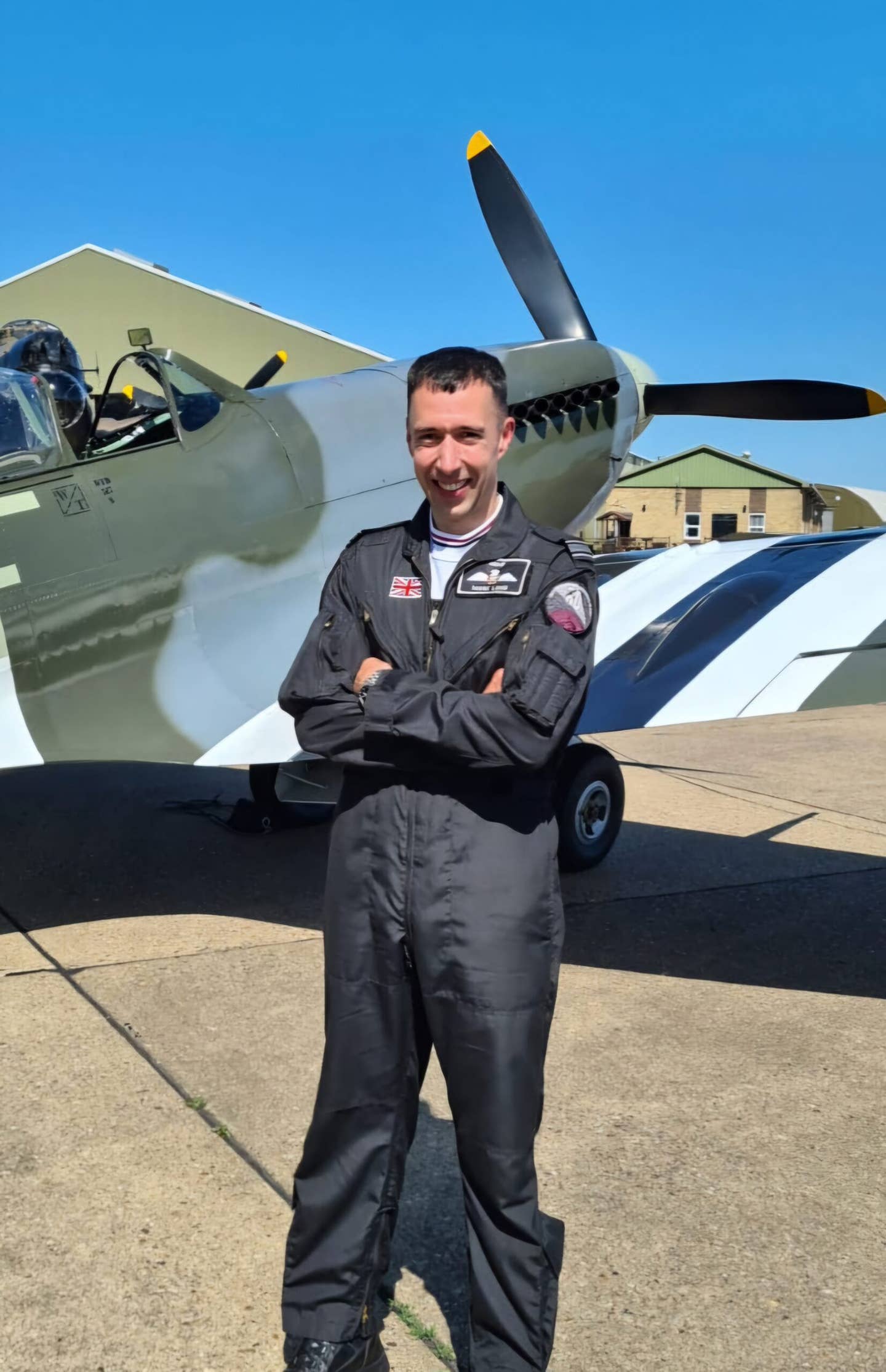RAF Pilot Dies In Spitfire Crash
Likely for the first time in decades, an active-duty Royal Air Force pilot died in the crash of a Spitfire on Saturday. Squadron Leader Mark Long was taking part in…

Likely for the first time in decades, an active-duty Royal Air Force pilot died in the crash of a Spitfire on Saturday. Squadron Leader Mark Long was taking part in a display by the Battle of Britain Memorial Flight at RAF Coningsby in northwest England. The aircraft reportedly suffered an engine failure on takeoff and came down in a field about 1:20 p.m. local time. It flipped and ended up within a few feet of a house. "It is with great sadness that we must confirm the death of an RAF pilot in a tragic accident near RAF Coningsby today. "The pilot's family have been informed and we ask that their privacy is respected at this difficult time."
The Battle of Britain Memorial Flight is based at Coningsby and participates in airshows and flypasts throughout the country as a tribute to the wartime exploits of British and Allied pilots. The unit had six Spitfires, two Hurricanes, a Lancaster, a C-47 and two Chipmunks used for training. They're all flown by frontline RAF pilots. Long was a former Typhoon fighter pilot and had been flying with the display squadron for four years. The crash airplane was a LF.XVIe model and was built in 1944.






